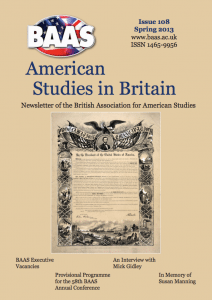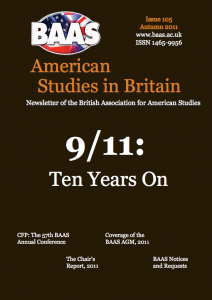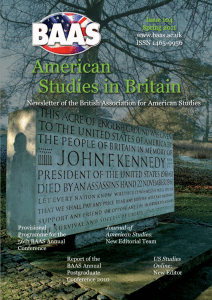 Period: Semester. 2nd semester, 2nd Year.
Period: Semester. 2nd semester, 2nd Year.
Exchange Universities: University of California; University of Illinois; University of Kansas; Northern Arizona University; Louisiana State University; University of Massachusetts; University of Southern Mississippi; University of New Mexico; State University of New York-Albany; University of North Carolina-Wilmington; Ohio University; Purdue University; University of Tennessee; Washington State University; University of Wisconsin-La Crosse; University of Utah; University of Wyoming
Exchange Tutor: Tim Woods
[vc_row margin_top=”0″ margin_bottom=”0″ padding_left=”0″ padding_right=”0″ bg_position=”top” bg_repeat=”no-repeat” bg_cover=”false” bg_attachment=”false” padding_top=”0″ padding_bottom=”0″ parallax_speed=”0.1″ bg_type=”no_bg” parallax_style=”vcpb-default” bg_image_repeat=”repeat” bg_image_size=”cover” bg_img_attach=”scroll” parallax_sense=”30″ animation_direction=”left-animation” animation_repeat=”repeat” bg_override=”0″ parallax_content_sense=”30″ fadeout_start_effect=”30″ overlay_pattern_opacity=”80″ seperator_type=”none_seperator” seperator_position=”top_seperator” seperator_shape_size=”40″ seperator_svg_height=”60″ seperator_shape_background=”#fff” seperator_shape_border=”none” seperator_shape_border_width=”1″ icon_type=”no_icon” icon_size=”32″ icon_style=”none” icon_color_border=”#333333″ icon_border_size=”1″ icon_border_radius=”500″ icon_border_spacing=”50″ img_width=”48″][vc_column width=”1/2″][vc_column_text]
American landscapes are some of the most well-known images of any kind – the Manhattan skyline, Monument Valley, the Grand Canyon and Niagara Falls are instantly recognisable in a thousand ads and TV shows.
[/vc_column_text][dt_gap height=”10″][vc_column_text]
But how have these places come to be as they are, and why are some places familiar while others are quite unknown? This book introduces the reader to the changing face of the American environment, tracing the way in which the present array of forests and farms, parks and highways, cities and suburbs has come about, and how these changes have been thought about, painted and turned into movie sets. From Thelma and Louise to Northern Exposure, the book concludes that the American landscape is what Americans have made of their surroundings.
[/vc_column_text][dt_gap height=”10″][vc_column_text css=”.vc_custom_1427130747167{border-top-width: 1px !important;border-right-width: 1px !important;border-bottom-width: 1px !important;border-left-width: 1px !important;padding-top: 20px !important;padding-right: 20px !important;padding-bottom: 20px !important;padding-left: 20px !important;background-color: #eaeaea !important;border-left-color: #b7b7b7 !important;border-left-style: solid !important;border-right-color: #b7b7b7 !important;border-right-style: solid !important;border-top-color: #b7b7b7 !important;border-top-style: solid !important;border-bottom-color: #b7b7b7 !important;border-bottom-style: solid !important;}”]
Author: Stephen F. Mills
Edition: 1
Binding: Paperback
ISBN: 9781853311796
Price: £24.99
Publication Date: Jun 1997
Dimensions: 216 x 138 mm
Extent: 160 pages
Series: BAAS Paperbacks
[/vc_column_text][/vc_column][vc_column width=”1/2″][vc_single_image image=”4795″ css_animation=”fadeInRight” border_color=”grey” img_link_target=”_self” img_size=”full”][dt_gap height=”5″][/vc_column][/vc_row][vc_row margin_top=”0″ margin_bottom=”0″ padding_left=”0″ padding_right=”0″ bg_position=”top” bg_repeat=”no-repeat” bg_cover=”false” bg_attachment=”false” padding_top=”0″ padding_bottom=”0″ parallax_speed=”0.1″ bg_type=”no_bg” parallax_style=”vcpb-default” bg_image_repeat=”repeat” bg_image_size=”cover” bg_img_attach=”scroll” parallax_sense=”30″ animation_direction=”left-animation” animation_repeat=”repeat” bg_override=”0″ parallax_content_sense=”30″ fadeout_start_effect=”30″ overlay_pattern_opacity=”80″ seperator_type=”none_seperator” seperator_position=”top_seperator” seperator_shape_size=”40″ seperator_svg_height=”60″ seperator_shape_background=”#fff” seperator_shape_border=”none” seperator_shape_border_width=”1″ icon_type=”no_icon” icon_size=”32″ icon_style=”none” icon_color_border=”#333333″ icon_border_size=”1″ icon_border_radius=”500″ icon_border_spacing=”50″ img_width=”48″][vc_column width=”1/1″][dt_gap height=”20″][/vc_column][/vc_row][vc_row margin_top=”0″ margin_bottom=”0″ padding_left=”0″ padding_right=”0″ type=”3″ bg_position=”top” bg_repeat=”no-repeat” bg_cover=”false” bg_attachment=”false” padding_top=”0″ padding_bottom=”0″ parallax_speed=”0.1″ bg_type=”no_bg” bg_grad=”background: -webkit-gradient(linear, left top, left bottom, color-stop(0%, #E3E3E3));background: -moz-linear-gradient(top,#E3E3E3 0%);background: -webkit-linear-gradient(top,#E3E3E3 0%);background: -o-linear-gradient(top,#E3E3E3 0%);background: -ms-linear-gradient(top,#E3E3E3 0%);background: linear-gradient(top,#E3E3E3 0%);” parallax_style=”vcpb-default” bg_image_repeat=”repeat” bg_image_size=”cover” bg_img_attach=”scroll” parallax_sense=”30″ animation_direction=”left-animation” animation_repeat=”repeat” bg_override=”0″ parallax_content_sense=”30″ fadeout_start_effect=”30″ overlay_pattern_opacity=”80″ seperator_type=”none_seperator” seperator_position=”top_seperator” seperator_shape_size=”40″ seperator_svg_height=”60″ seperator_shape_background=”#ffffff” seperator_shape_border=”none” seperator_shape_border_width=”1″ icon_type=”no_icon” icon_size=”32″ icon_style=”none” icon_color_border=”#333333″ icon_border_size=”1″ icon_border_radius=”500″ icon_border_spacing=”50″ img_width=”48″ ult_hide_row_large_screen=”off” ult_hide_row_desktop=”off” ult_hide_row_tablet=”off” ult_hide_row_tablet_small=”off” ult_hide_row_mobile=”off” ult_hide_row_mobile_large=”off”][vc_column width=”1/1″][dt_gap height=”20″][vc_column_text]
Key Features
[dt_gap height=”10″ /][/vc_column_text][dt_vc_list style=”1″ bullet_position=”middle” dividers=”false”]
- The only balanced overview of the history and politics of America in the 1920s
- Revises the traditional views of the Presidencies of Harding and Coolidge
- Places the politics in its social and cultural context.
[/dt_vc_list][dt_gap height=”20″][/vc_column][/vc_row][vc_row][vc_column width=”1/1″][dt_gap height=”20″][ult_buttons btn_title=”BUY YOUR COPY HERE” btn_align=”ubtn-center” btn_size=”ubtn-custom” btn_title_color=”#ffffff” btn_bg_color=”#53b4db” btn_hover=”ubtn-no-hover-bg” btn_anim_effect=”ulta-hover” icon_size=”25″ btn_icon_pos=”ubtn-sep-icon-at-right” btn_border_size=”1″ btn_radius=”3″ btn_shadow_size=”5″ tooltip_pos=”left” btn_bg_color_hover=”#3e8da8″ icon=”Defaults-chevron-right” btn_font_family=”font_family:Roboto|font_call:Roboto|variant:900″ btn_font_style=”font-weight:900;” btn_font_size=”18″ btn_width=”270″ btn_height=”60″ btn_padding_left=”10″ btn_padding_top=”10″ btn_link=”url:http%3A%2F%2Fwww.amazon.co.uk%2Fgp%2Fproduct%2F1853311790%2Fref%3Dnosim%2F%3Ftag%3Dwwweuppublish-21|title:The%20American%20Landscape|target:%20_blank”][/vc_column][/vc_row]
[vc_row margin_top=”0″ margin_bottom=”0″ padding_left=”0″ padding_right=”0″ bg_position=”top” bg_repeat=”no-repeat” bg_cover=”false” bg_attachment=”false” padding_top=”0″ padding_bottom=”0″ parallax_speed=”0.1″ bg_type=”no_bg” parallax_style=”vcpb-default” bg_image_repeat=”repeat” bg_image_size=”cover” bg_img_attach=”scroll” parallax_sense=”30″ animation_direction=”left-animation” animation_repeat=”repeat” bg_override=”0″ parallax_content_sense=”30″ fadeout_start_effect=”30″ overlay_pattern_opacity=”80″ seperator_type=”none_seperator” seperator_position=”top_seperator” seperator_shape_size=”40″ seperator_svg_height=”60″ seperator_shape_background=”#fff” seperator_shape_border=”none” seperator_shape_border_width=”1″ icon_type=”no_icon” icon_size=”32″ icon_style=”none” icon_color_border=”#333333″ icon_border_size=”1″ icon_border_radius=”500″ icon_border_spacing=”50″ img_width=”48″][vc_column width=”1/1″][vc_column_text]
An accessible introduction to a key aspect in economic history – the impact of American financial intervention in Europe after the Second World War.
[/vc_column_text][dt_gap height=”20″][/vc_column][/vc_row][vc_row margin_top=”0″ margin_bottom=”0″ padding_left=”0″ padding_right=”0″ bg_position=”top” bg_repeat=”no-repeat” bg_cover=”false” bg_attachment=”false” padding_top=”0″ padding_bottom=”0″ parallax_speed=”0.1″ bg_type=”no_bg” parallax_style=”vcpb-default” bg_image_repeat=”repeat” bg_image_size=”cover” bg_img_attach=”scroll” parallax_sense=”30″ animation_direction=”left-animation” animation_repeat=”repeat” bg_override=”0″ parallax_content_sense=”30″ fadeout_start_effect=”30″ overlay_pattern_opacity=”80″ seperator_type=”none_seperator” seperator_position=”top_seperator” seperator_shape_size=”40″ seperator_svg_height=”60″ seperator_shape_background=”#fff” seperator_shape_border=”none” seperator_shape_border_width=”1″ icon_type=”no_icon” icon_size=”32″ icon_style=”none” icon_color_border=”#333333″ icon_border_size=”1″ icon_border_radius=”500″ icon_border_spacing=”50″ img_width=”48″][vc_column width=”1/2″][vc_column_text]Did ‘American dollars save the world’ in 1947? Would Europe have revived spontaneously after 1945? If the Marshall Plan – in conjunction with NATO – created a coherent and prosperous western bloc, was this critical for the outcome of the Cold War? Did American policy in some way cause the substantial convergence since 1945 intransatlantic productivity, incomes and living styles, or was this convergence bound to happen anyway?
These are important questions, to which this careful analysis provides some new and provocative answers. Covering all the main areas of immediate post-war US policy in Europe it includes useful material on the Bretton Woods debates, the American loan negotiation with Britain as well as the Marshall Plan.[/vc_column_text][dt_gap height=”10″][vc_column_text css=”.vc_custom_1427129974702{border-top-width: 1px !important;border-right-width: 1px !important;border-bottom-width: 1px !important;border-left-width: 1px !important;padding-top: 20px !important;padding-right: 20px !important;padding-bottom: 20px !important;padding-left: 20px !important;background-color: #eaeaea !important;border-left-color: #b7b7b7 !important;border-left-style: solid !important;border-right-color: #b7b7b7 !important;border-right-style: solid !important;border-top-color: #b7b7b7 !important;border-top-style: solid !important;border-bottom-color: #b7b7b7 !important;border-bottom-style: solid !important;}”]Author: John Killick
Edition: 1
Binding: Paperback
ISBN: 9781853311789
Price: £26.99
Publication Date: Nov 1997
Dimensions: 216 x 138 mm
Extent: 224 pages
Series: BAAS Paperbacks[/vc_column_text][/vc_column][vc_column width=”1/2″][vc_single_image image=”4790″ css_animation=”fadeInRight” border_color=”grey” img_link_target=”_self” img_size=”full”][dt_gap height=”5″][/vc_column][/vc_row][vc_row][vc_column width=”1/1″][dt_gap height=”20″][ult_buttons btn_title=”BUY YOUR COPY HERE” btn_align=”ubtn-center” btn_size=”ubtn-custom” btn_title_color=”#ffffff” btn_bg_color=”#53b4db” btn_hover=”ubtn-no-hover-bg” btn_anim_effect=”ulta-hover” icon_size=”25″ btn_icon_pos=”ubtn-sep-icon-at-right” btn_border_size=”1″ btn_radius=”3″ btn_shadow_size=”5″ tooltip_pos=”left” btn_bg_color_hover=”#3e8da8″ icon=”Defaults-chevron-right” btn_font_family=”font_family:Roboto|font_call:Roboto|variant:900″ btn_font_style=”font-weight:900;” btn_font_size=”18″ btn_width=”270″ btn_height=”60″ btn_padding_left=”10″ btn_padding_top=”10″ btn_link=”url:http%3A%2F%2Fwww.amazon.co.uk%2Fgp%2Fproduct%2F1853311782%2Fref%3Dnosim%2F%3Ftag%3Dwwweuppublish-21|title:The%20United%20States%20and%20European%20Reconstruction%3A%201945-1960%20|target:%20_blank”][/vc_column][/vc_row]
[vc_row margin_top=”0″ margin_bottom=”0″ padding_left=”0″ padding_right=”0″ bg_position=”top” bg_repeat=”no-repeat” bg_cover=”false” bg_attachment=”false” padding_top=”0″ padding_bottom=”0″ parallax_speed=”0.1″ bg_type=”no_bg” parallax_style=”vcpb-default” bg_image_repeat=”repeat” bg_image_size=”cover” bg_img_attach=”scroll” parallax_sense=”30″ animation_direction=”left-animation” animation_repeat=”repeat” bg_override=”0″ parallax_content_sense=”30″ fadeout_start_effect=”30″ overlay_pattern_opacity=”80″ seperator_type=”none_seperator” seperator_position=”top_seperator” seperator_shape_size=”40″ seperator_svg_height=”60″ seperator_shape_background=”#fff” seperator_shape_border=”none” seperator_shape_border_width=”1″ icon_type=”no_icon” icon_size=”32″ icon_style=”none” icon_color_border=”#333333″ icon_border_size=”1″ icon_border_radius=”500″ icon_border_spacing=”50″ img_width=”48″][vc_column width=”1/1″][vc_column_text]
Over the past ten years Hollywood has devoted big budgets and established stars to films about controversial issues, while identities previously considered marginal have come into prominence on the big screen.
[/vc_column_text][dt_gap height=”20″][/vc_column][/vc_row][vc_row margin_top=”0″ margin_bottom=”0″ padding_left=”0″ padding_right=”0″ bg_position=”top” bg_repeat=”no-repeat” bg_cover=”false” bg_attachment=”false” padding_top=”0″ padding_bottom=”0″ parallax_speed=”0.1″ bg_type=”no_bg” parallax_style=”vcpb-default” bg_image_repeat=”repeat” bg_image_size=”cover” bg_img_attach=”scroll” parallax_sense=”30″ animation_direction=”left-animation” animation_repeat=”repeat” bg_override=”0″ parallax_content_sense=”30″ fadeout_start_effect=”30″ overlay_pattern_opacity=”80″ seperator_type=”none_seperator” seperator_position=”top_seperator” seperator_shape_size=”40″ seperator_svg_height=”60″ seperator_shape_background=”#fff” seperator_shape_border=”none” seperator_shape_border_width=”1″ icon_type=”no_icon” icon_size=”32″ icon_style=”none” icon_color_border=”#333333″ icon_border_size=”1″ icon_border_radius=”500″ icon_border_spacing=”50″ img_width=”48″][vc_column width=”1/2″][vc_column_text]
The authors examine the issues raised by these developments, bringing together debates in identity politics with film studies and launching an innovative theorisation of cinematic representation of identity. Movies from Forrest Gump to Philadelphia, fromMalcolm X to Falling Down, have engaged explicitly with notions of multiculturalism and identity politics. This book is concerned pre-eminently with the meanings put into circulation by these mainstream films and audiences’ readings of them. It provides a brief and accessible introduction to such issues as arguments over positive and negative images and the relationship between cultural representation and political power.
[/vc_column_text][dt_gap height=”10″][vc_column_text css=”.vc_custom_1427129263028{border-top-width: 1px !important;border-right-width: 1px !important;border-bottom-width: 1px !important;border-left-width: 1px !important;padding-top: 20px !important;padding-right: 20px !important;padding-bottom: 20px !important;padding-left: 20px !important;background-color: #eaeaea !important;border-left-color: #b7b7b7 !important;border-left-style: solid !important;border-right-color: #b7b7b7 !important;border-right-style: solid !important;border-top-color: #b7b7b7 !important;border-top-style: solid !important;border-bottom-color: #b7b7b7 !important;border-bottom-style: solid !important;}”]Author: Jude Davies and Carol Smith
Edition: 1
Binding: Paperback
ISBN: 9781853311741
Price: £24.99
Publication Date: Jan 1998
Dimensions: 216 x 138 mm
Extent: 160 pages
Series: BAAS Paperbacks[/vc_column_text][/vc_column][vc_column width=”1/2″][vc_single_image image=”4782″ css_animation=”fadeInRight” border_color=”grey” img_link_target=”_self” img_size=”full”][dt_gap height=”5″][/vc_column][/vc_row][vc_row][vc_column width=”1/1″][dt_gap height=”20″][ult_buttons btn_title=”BUY YOUR COPY HERE” btn_align=”ubtn-center” btn_size=”ubtn-custom” btn_title_color=”#ffffff” btn_bg_color=”#53b4db” btn_hover=”ubtn-no-hover-bg” btn_anim_effect=”ulta-hover” icon_size=”25″ btn_icon_pos=”ubtn-sep-icon-at-right” btn_border_size=”1″ btn_radius=”3″ btn_shadow_size=”5″ tooltip_pos=”left” btn_bg_color_hover=”#3e8da8″ icon=”Defaults-chevron-right” btn_font_family=”font_family:Roboto|font_call:Roboto|variant:900″ btn_font_style=”font-weight:900;” btn_font_size=”18″ btn_width=”270″ btn_height=”60″ btn_padding_left=”10″ btn_padding_top=”10″ btn_link=”url:http%3A%2F%2Fwww.amazon.co.uk%2Fgp%2Fproduct%2F185331174X%2Fref%3Dnosim%2F%3Ftag%3Dwwweuppublish-21|title:Gender%2C%20Ethnicity%20and%20Sexuality%20in%20Contemporary%20American%20Film%20|target:%20_blank”][/vc_column][/vc_row]
 Period: Semester. 2nd semester, 2nd Year.
Period: Semester. 2nd semester, 2nd Year.
 Issue 108, Spring 2013 (PDF)
Issue 108, Spring 2013 (PDF)

 Issue 105, Autumn 2011 (PDF)
Issue 105, Autumn 2011 (PDF) Issue 104, Spring 2011 (PDF)
Issue 104, Spring 2011 (PDF) Issue 103, Autumn 2010 (PDF)
Issue 103, Autumn 2010 (PDF)